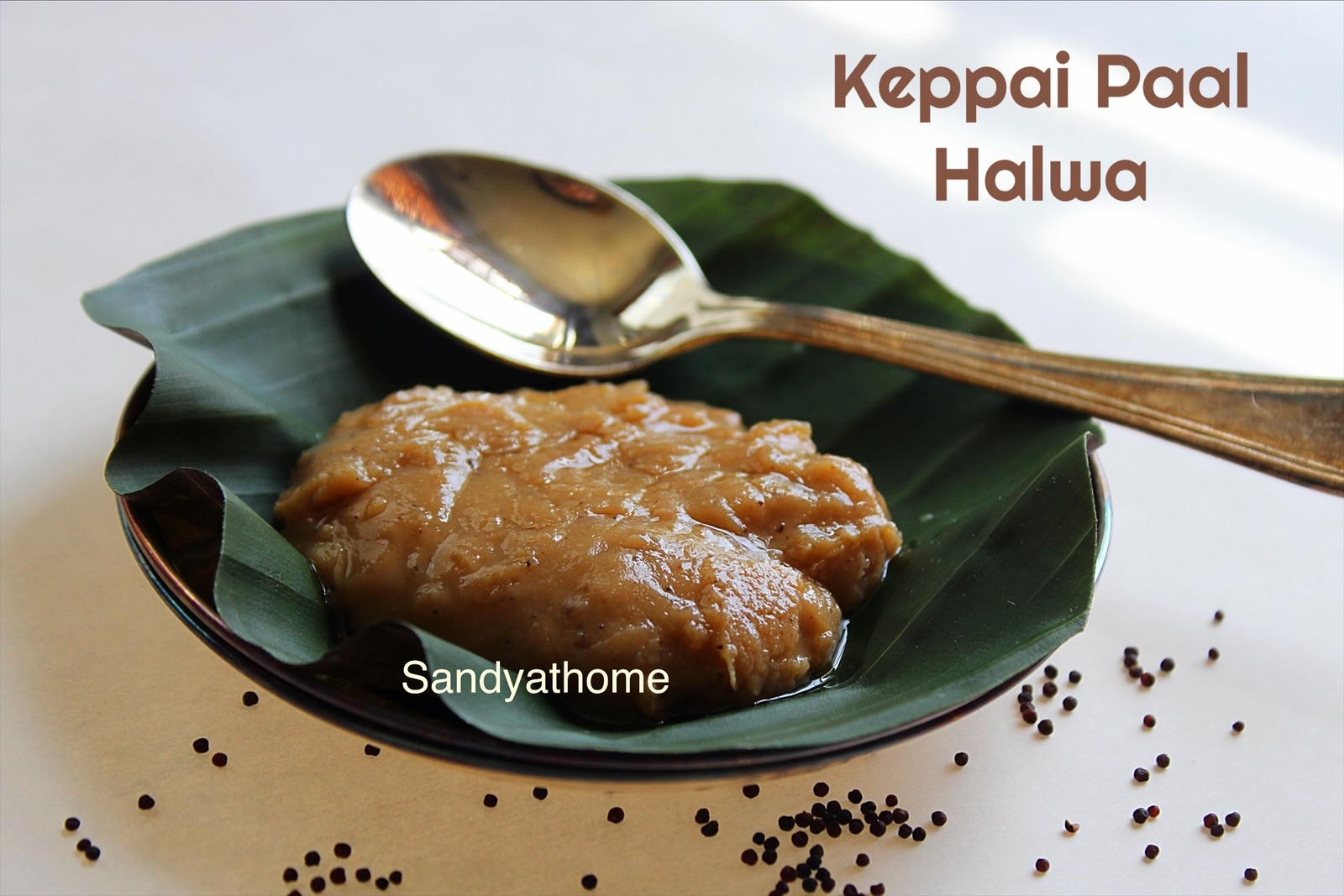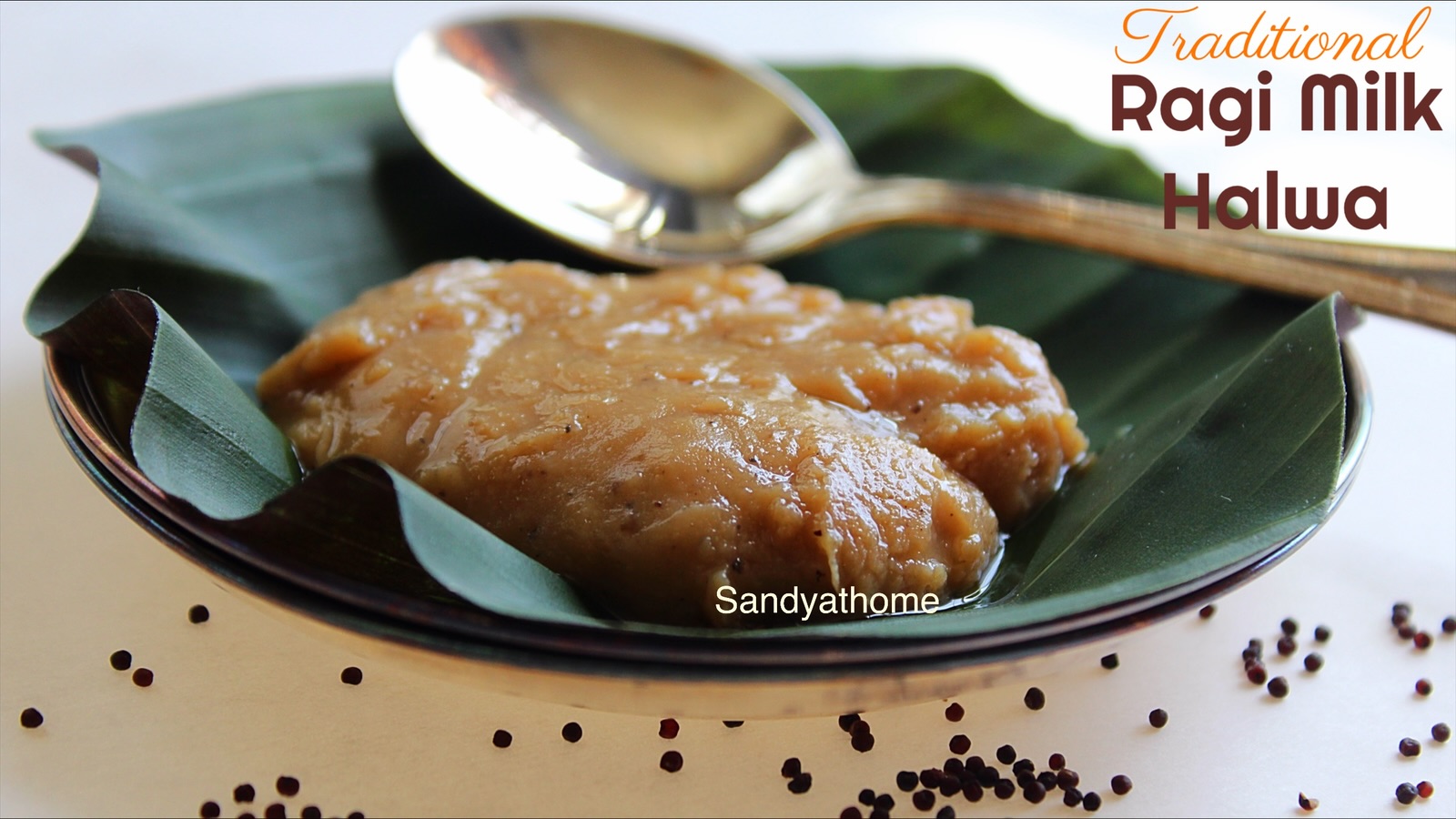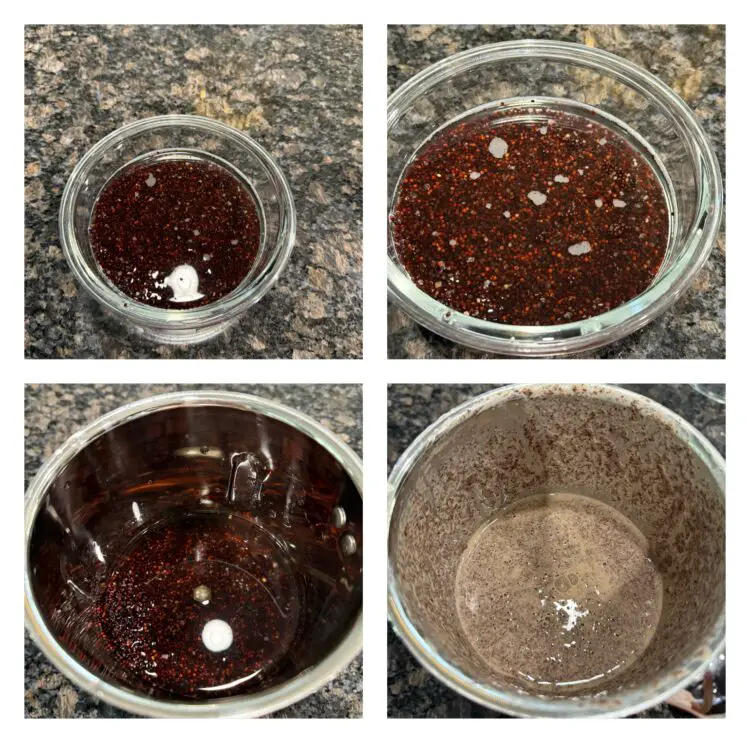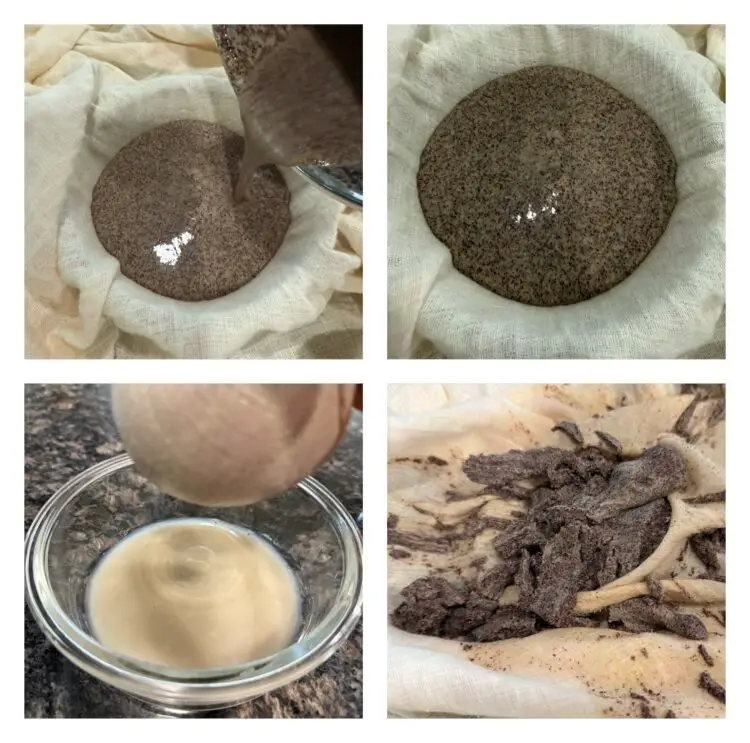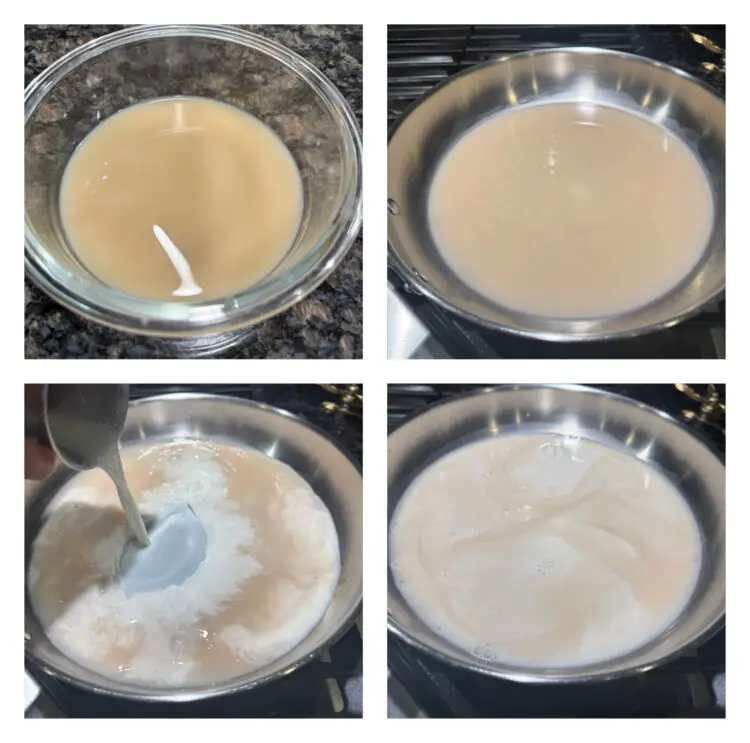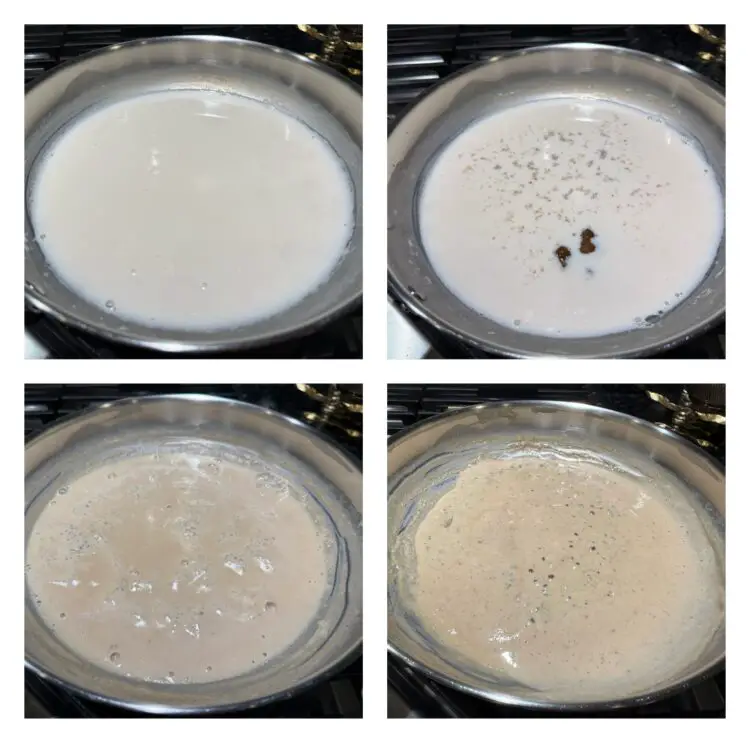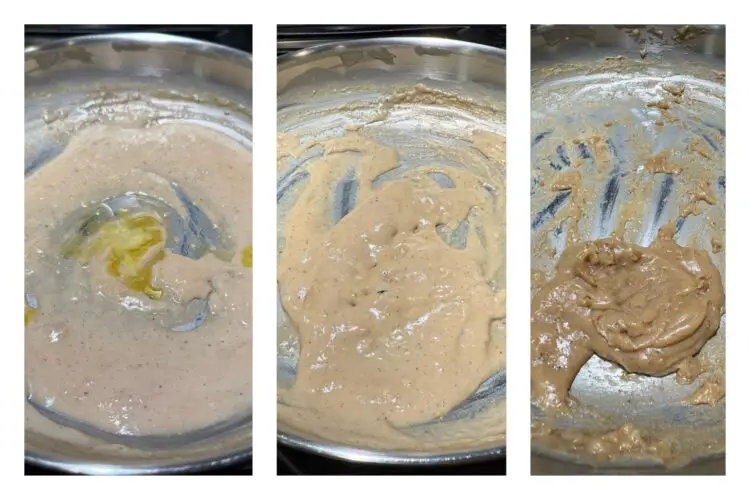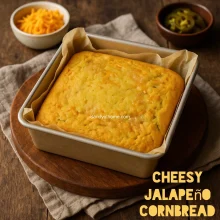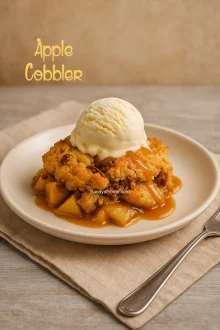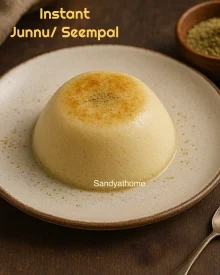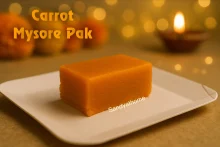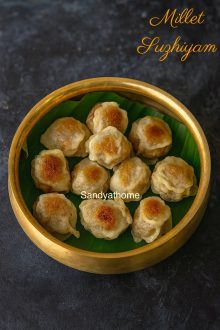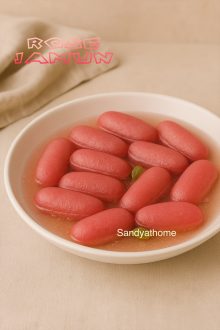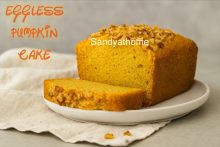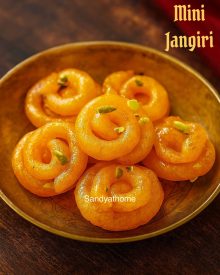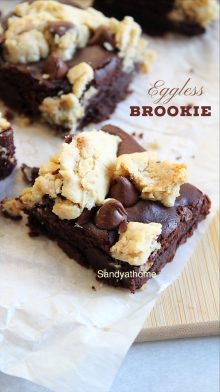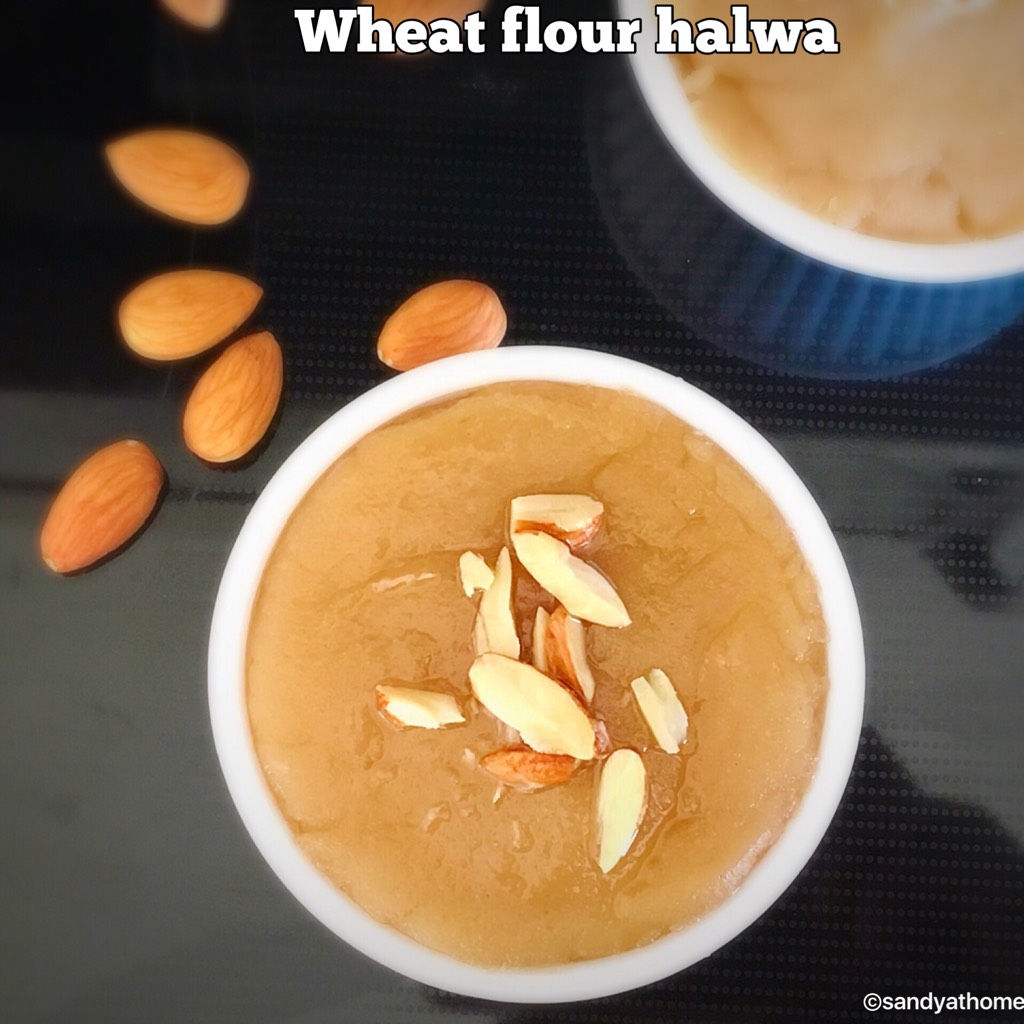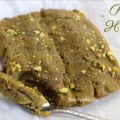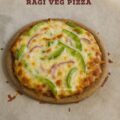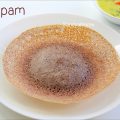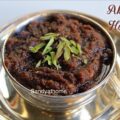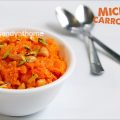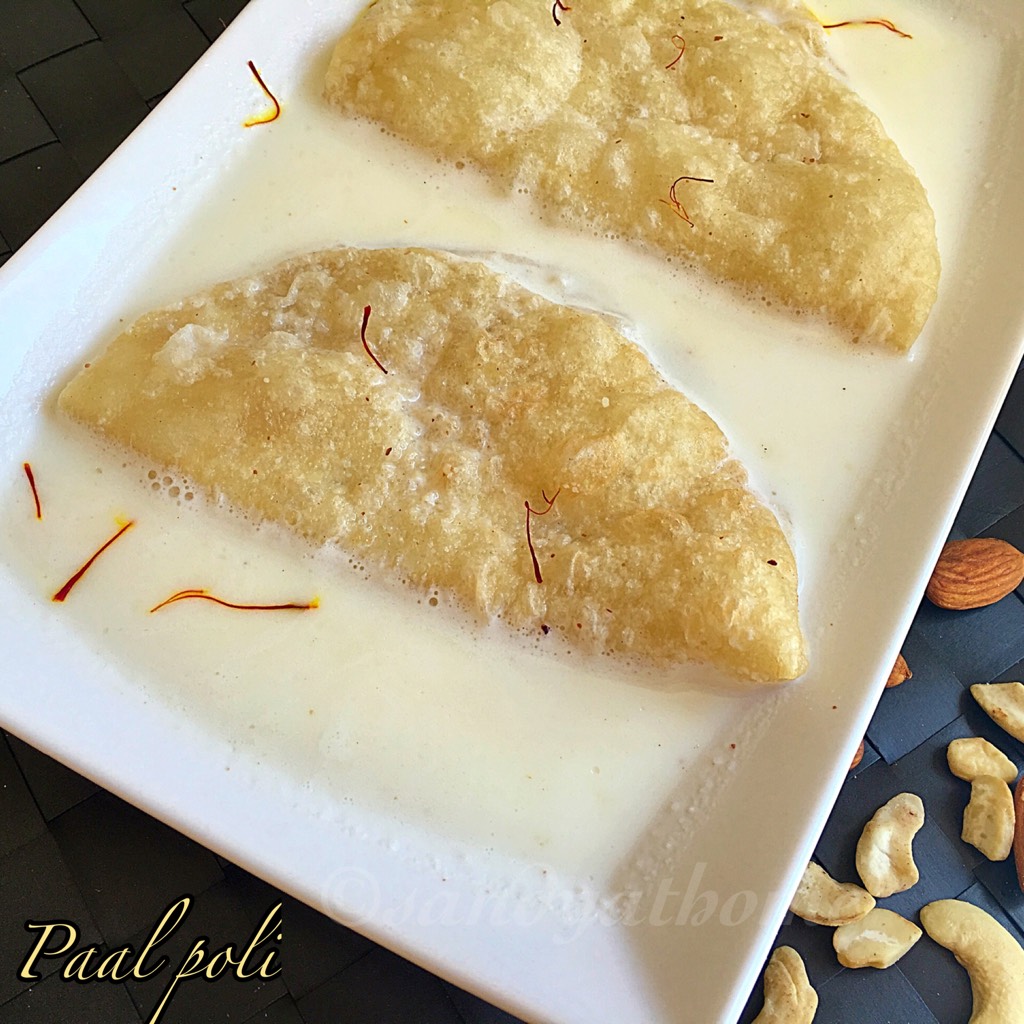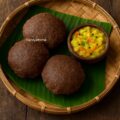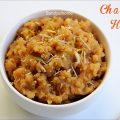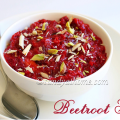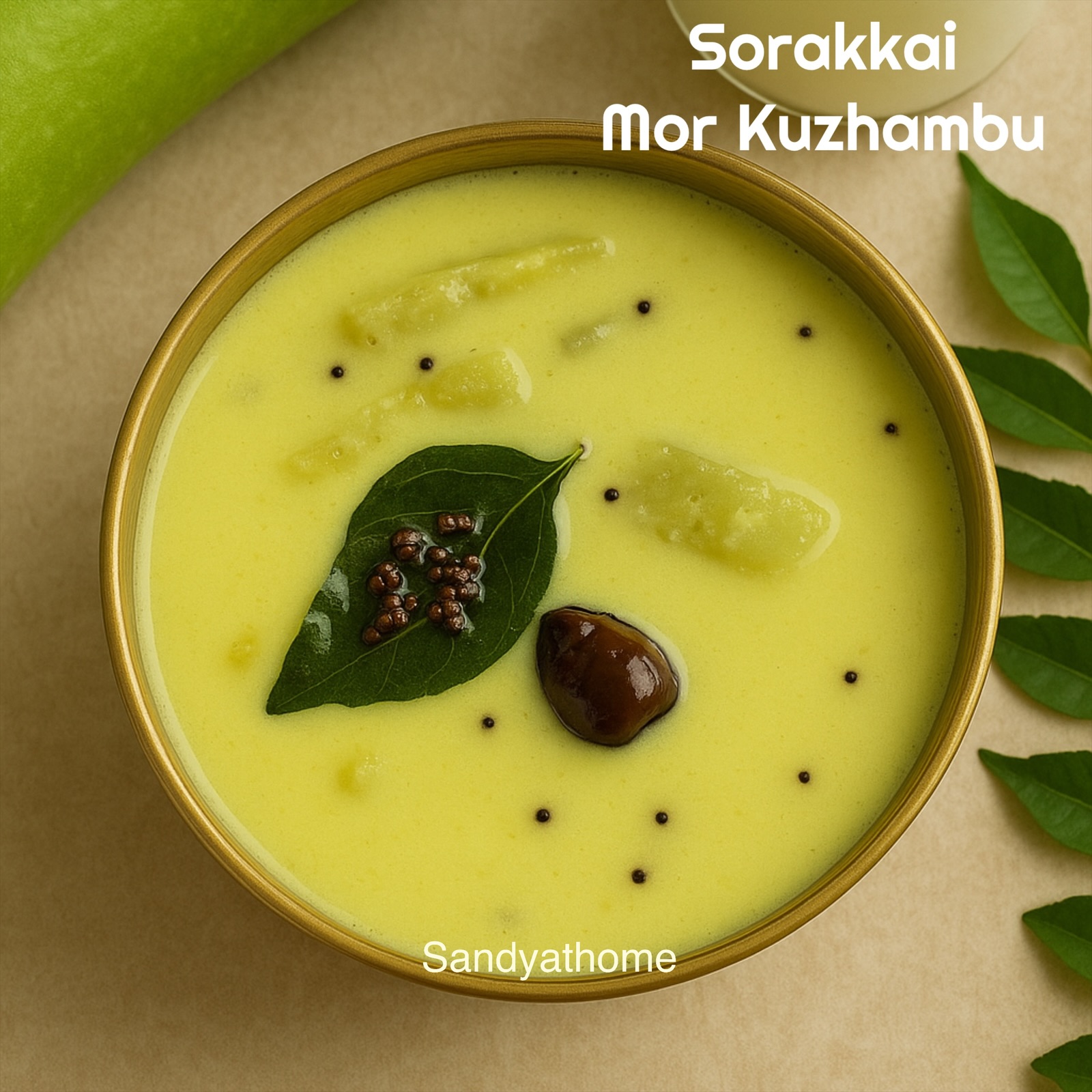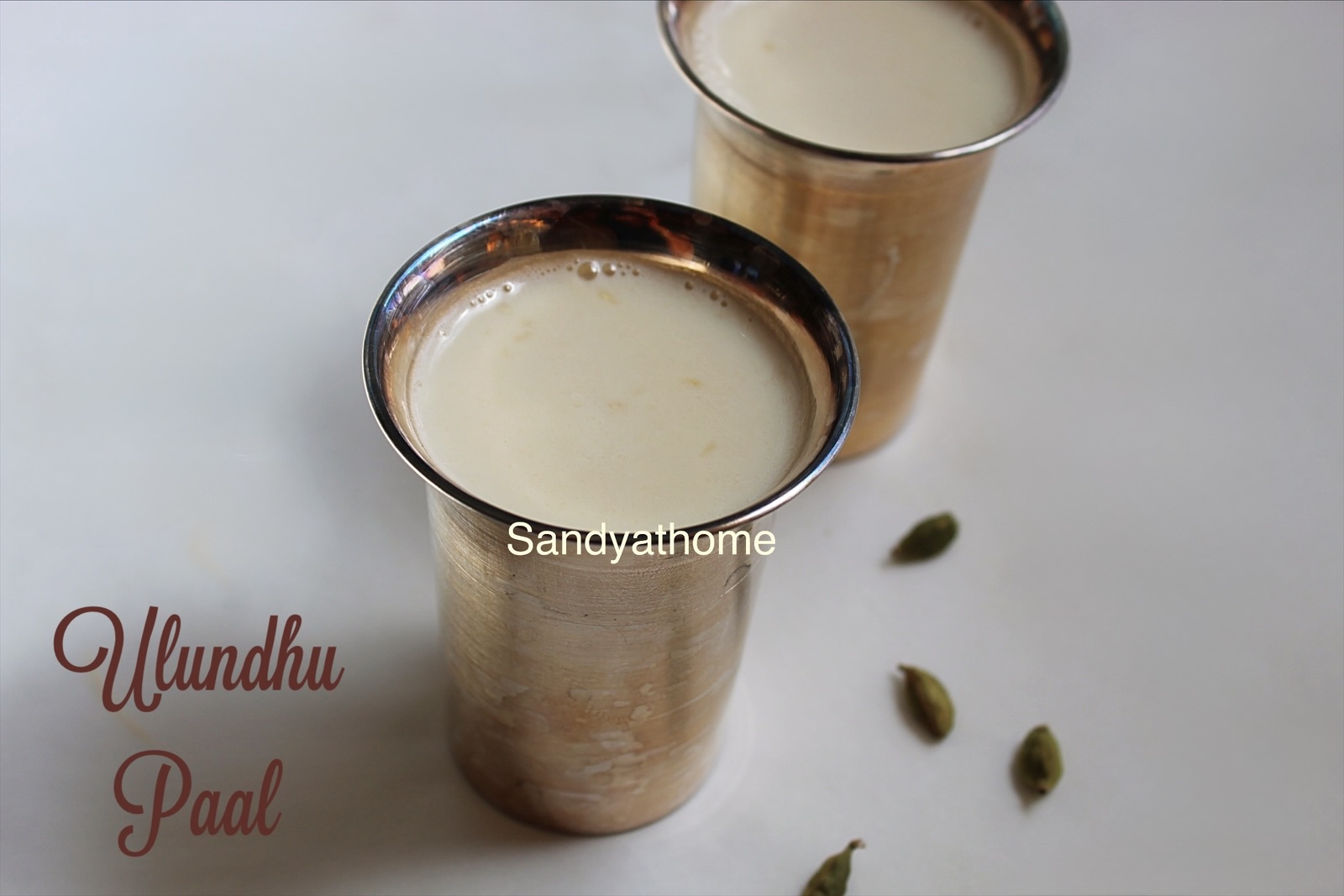© 2025 Sandyathome. All rights reserved.
This Keppai Paal Halwa recipe — including its historical narrative, ingredients, process, styling, and images — is the intellectual property of Sandhya, creator of Sandyathome.
Strictly no reproduction, adaptation, republication, or linking permitted. Legal action will be taken against any unauthorized use or plagiarism of this content.
Keppai Paal Halwa — a traditional ragi milk halwa passed down through Tamil Muslim homes in and around Tirunelveli — is one of the most soulful ancient revival recipes you’ll ever stir. Unlike store-bought sweets, this post-Bakrid specialty was made from scratch: soaked whole finger millet, slow-stirred with milk and ghee, and served warm after the feasting was done. Soft, glossy, and nourishing, this authentic millet halwa isn’t sliceable — it’s meant to be scooped and savored. If you’re looking for the best-tasting ragi halwa with deep roots and gentle sweetness, this forgotten heirloom dessert deserves a place in your kitchen.
History: A Halwa from Grain, Not Glamour
Long before packaged halwas and Instagram-worthy sweets took over festive tables, there existed a quieter kind — like this Keppai Paal Halwa, made from freshly ground finger millet. In Tamil Muslim homes, especially during Bakrid, the feast was followed by days of gentle, easily digestible dishes. Rich biryanis and meat curries gave way to strength-giving porridges, dumplings, and halwas made from grains like ragi (keppai).
This halwa wasn’t bought from sweet shops — it was stirred at home, often by grandmothers or mothers who knew exactly when the mixture had reached the right thickness by feel, not timers. Made without shortcuts, it was a nourishing post-feast treat, especially for those recovering from the indulgence of celebration. Served warm with a spoon or chilled with bananas, it was food as comfort, not display.
Such traditional millet-based halwas may have quietly disappeared from modern Bakrid spreads, but reviving them brings not just flavor but memory — of kitchens where grain, ghee, and time worked together to create something unforgettable.
Jump to Recipe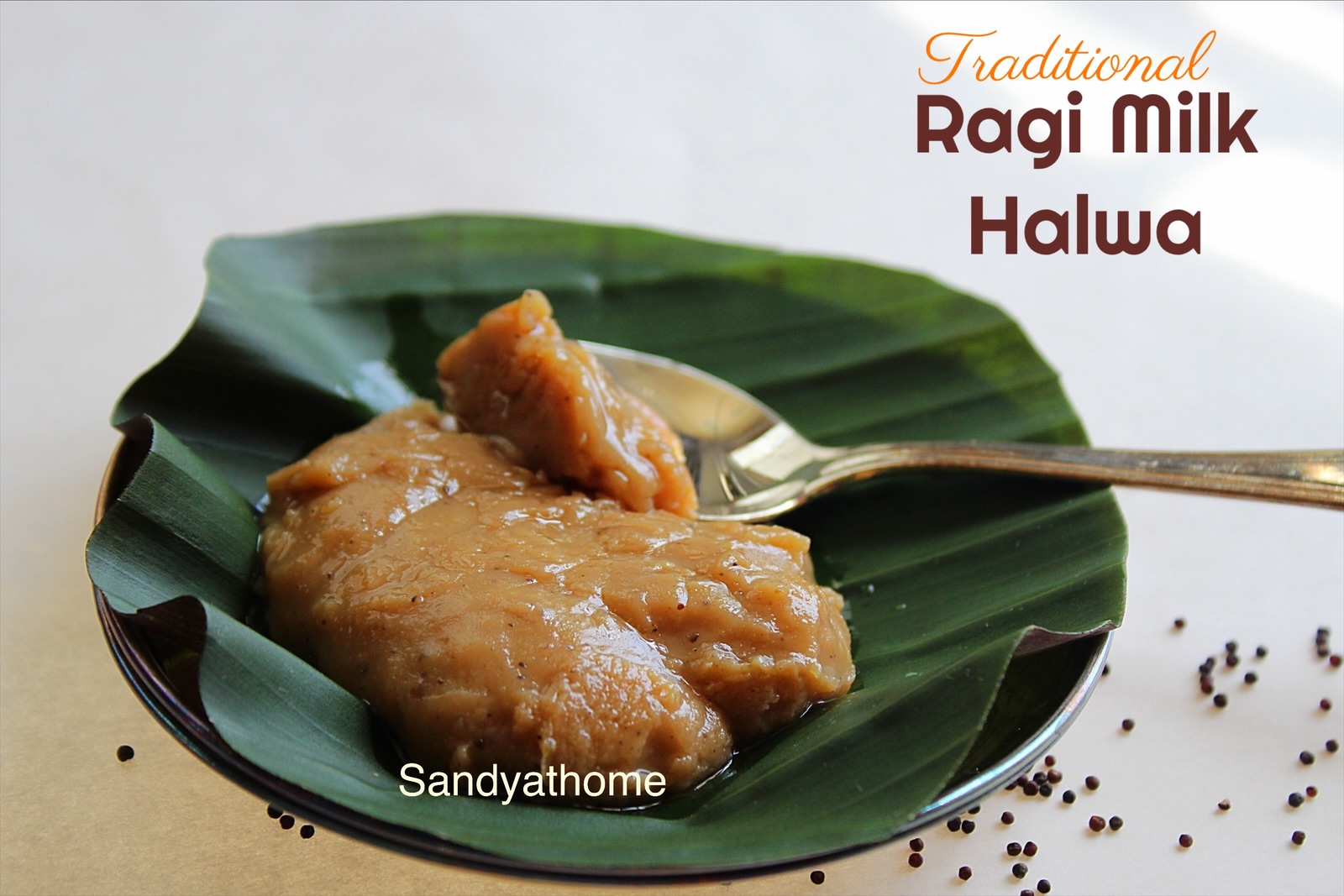
Author’s Note:
I was absolutely thrilled to make this halwa — from soaking the ragi to stirring it patiently on low flame. Every step felt grounding, almost meditative. And when I finally tasted it, all that effort melted into quiet joy. It’s true what they say — old is gold. This traditional ragi halwa isn’t just a sweet; it’s a feeling, a revival, and a reminder that the most beautiful recipes are often the ones nearly forgotten.
Ragi Milk Halwa ingredients & their Roles
| Ingredient | Role in the Dish |
|---|---|
| Ghee | The game-changer. Ghee adds gloss, softness, and a comforting depth — and helps the halwa come together as one spoonable mass. |
| Whole Ragi (Finger Millet) | The soul of this halwa. Using whole soaked ragi — not flour — gives the halwa a deep, earthy taste and creamy consistency. It’s rich in iron and calcium, and the fresh milk extracted from it gives the dish its unique depth. |
| Water | Used only for extracting ragi milk. It helps grind the millet smoothly and carry its nutrients into the halwa. |
| Milk (Cow’s or Coconut) | Cow’s milk brings richness and body, while coconut milk adds a soft, fragrant sweetness. Either way, it balances the slight earthiness of the ragi. |
| Sugar | Just 3 tablespoons — as was traditionally done — to preserve the gentle nature of this sweet. It adds mild sweetness without overpowering the grain’s natural flavor. |
| Cardamom Powder | Lends that familiar festive aroma, giving the halwa warmth and rounding out the flavors. |
| Sukku Powder (Dry Ginger) | Optional, but old recipes often included it for its digestive benefits, especially after Bakrid feasts. |
You May Also Like these Recipes:
Directions to make Ragi Milk Halwa with step by step images
- To Extract Ragi Milk:
Soak whole ragi overnight.
Drain and grind with 1/2 cup water to a smooth paste.
Strain through a muslin cloth or fine sieve.
Repeat with more water for second extract. Combine both (~3/4 cup total).
- To Extract Ragi Milk:
Strain through a muslin cloth or fine sieve.
Repeat with more water for second extract. Combine both (~3/4 cup total).
- Method:
In a heavy-bottomed pan, mix extracted ragi milk and regular milk.
Place on low flame. Stir continuously.
- Method:
When bubbles form and the mixture thickens slightly, add sugar, cardamom, and sukku powder.
Continue stirring on low flame — it takes time.
- Method:
As the mixture thickens, add ghee little by little.
Stir until it leaves the sides of the pan and becomes glossy and spoonable.
Remove from heat and transfer to a bowl or banana leaf.
Pro Tips for Ragi Milk Halwa
- Use whole ragi, not flour: Freshly extracted ragi milk gives a smoother, more authentic taste than store-bought flour.
- Stir continuously on low flame: Prevents curdling and gives the halwa its signature gloss and smoothness.
- Don’t rush the ghee: Add it slowly in intervals to get that soft, spoonable texture.
- Avoid adding sugar too early: Wait for slight thickening before adding, to prevent watery halwa.
- Freshly ground cardamom makes a difference: It lifts the halwa’s aroma naturally.
Serving Suggestions
- Serve warm with a drizzle of melted ghee — just like it was enjoyed after Bakrid feasts.
- Chill and top with sliced ripe banana for a gentle, post-meal sweet.
FAQ’s about Ragi Milk Halwa
Yes. Use thick coconut milk instead of cow’s milk to make a dairy-free version. It adds a soft, naturally sweet flavor.
Bitterness usually comes from old or over-roasted ragi. Always use fresh whole ragi and avoid high flame while cooking.
Technically yes, but for this revival-style halwa, whole soaked ragi gives a richer, silkier result than flour.
Absolutely. It’s a nutrient-rich sweet with iron and calcium, especially when made with less sugar and served warm.
It’s best enjoyed fresh. You can refrigerate for a day and gently warm it with a touch of milk and ghee before serving
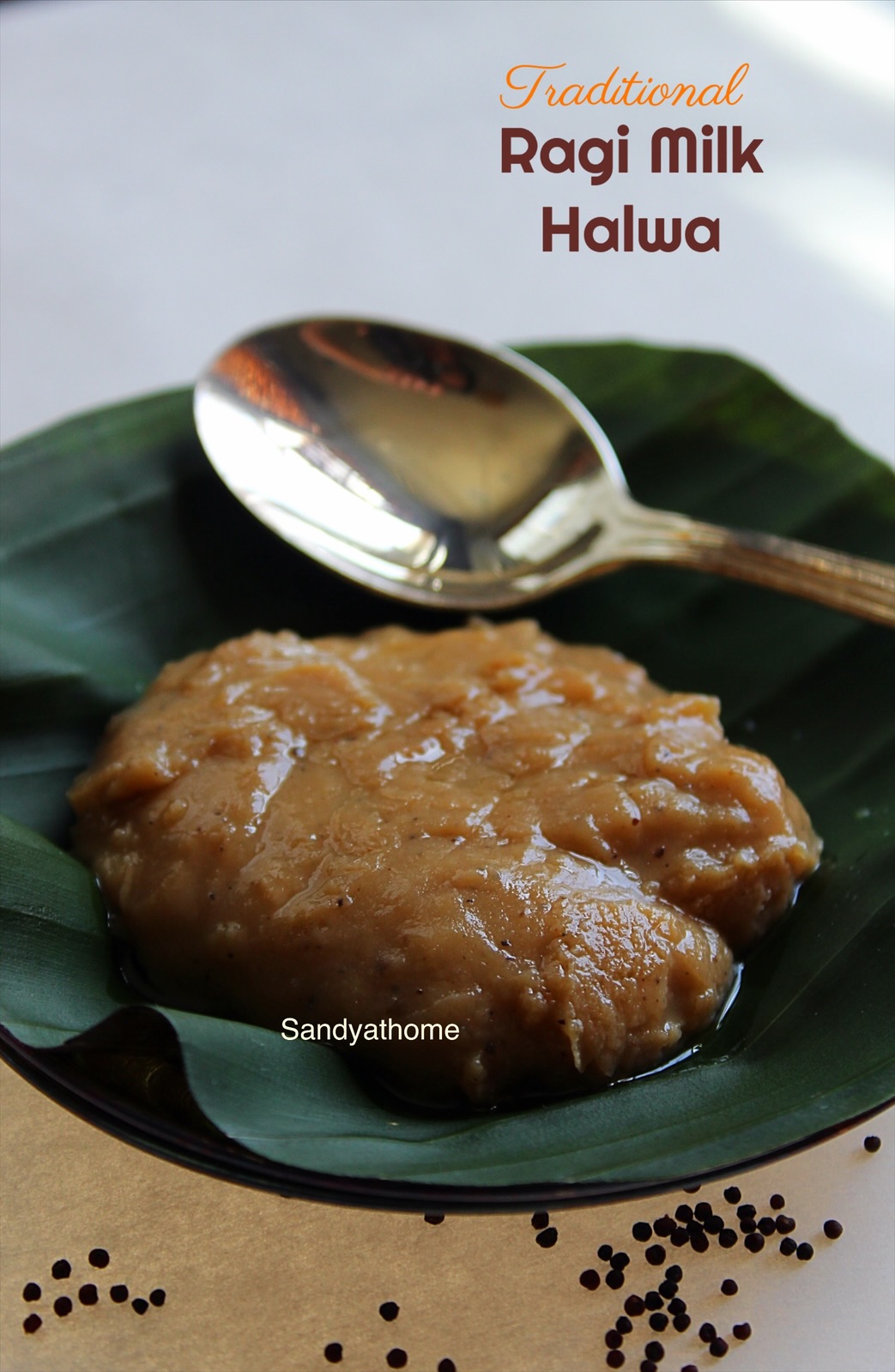
Sweets and Desserts
Sweet & Savory Jalapeño Cheddar Cornbread, How to make Cornbread
A soft, sweet–savory cornbread baked with cheddar cheese, pickled jalapeños, and garlic powder — the perfect quick side for Thanksgiving or any cozy meal.
Apple Cobbler, How to make Thanksgiving Apple Cobbler
A cozy, small-batch Thanksgiving apple cobbler made with just two apples, warm spices, and a golden biscuit topping. Perfect when you want a quick fall dessert without making a full tray.
Pumpkin Butter Mascarpone Danish, How to make Pumpkin Butter Danish
Flaky puff pastry filled with a creamy blend of pumpkin and mascarpone, baked until golden and irresistible — the perfect cozy fall treat for National Pumpkin Day!
Instant Junnu Recipe, How to make Instant Kharvas
A quick and nostalgic Indian milk pudding made using instant Junnu powder, raw milk, and cardamom — no colostrum needed! This gently steamed dessert sets into a soft, wobbly texture and tastes just like home, without the overpowering aroma of traditional kharvas.
Carrot Mysore Pak, How to make Ghee Carrot Mysore Pak
Soft, melt-in-the-mouth Carrot Mysore Pak made with fresh carrot puree, roasted besan, sugar, and ghee. A festive twist to the traditional Mysore Pak that’s rich, aromatic, and naturally hued — perfect for Deepavali celebrations.
Millet Suzhiyam, How to make Millet Suyyam
Celebrate Diwali the wholesome way with this Thinai (Foxtail Millet) Suzhiyam / Suyyam — a golden, crisp festive sweet filled with soft jaggery-chana dal goodness. This healthy twist keeps all the traditional flavor while swapping maida for nutritious millet flour.
Rose Jamun, How to make Paneer Rose Jamun
Paneer Rose Jamun is a delightful twist on the classic rasgulla — made fresh from curdled milk (chenna) and flavored with fragrant rose syrup. Each piece is soft, juicy, and blush-pink in color, soaked in a sweet rose-cardamom syrup that fills your kitchen with a festive aroma. Perfect for Diwali, Holi, or any celebration where you want homemade mithai magic!
Eggless Pumpkin Cake, How to make Pumpkin Cake
Soft, moist, and warmly spiced, this Eggless Pumpkin Cake melts in your mouth with a tender crumb and a cozy hint of cinnamon and nutmeg.
Mini Jangiri, How to make Mini Imarti
Mini Jangiri made with urad dal and a pinch of turmeric for natural color — golden, syrupy, and perfectly festive in every bite.
Eggless Brookie, How to make Eggless Brookie
Eggless brookies combine the best of both worlds — a chewy cookie top with a fudgy brownie base. With a shiny crinkle crust and gooey center, these bars are the perfect indulgence for chocolate lovers.
